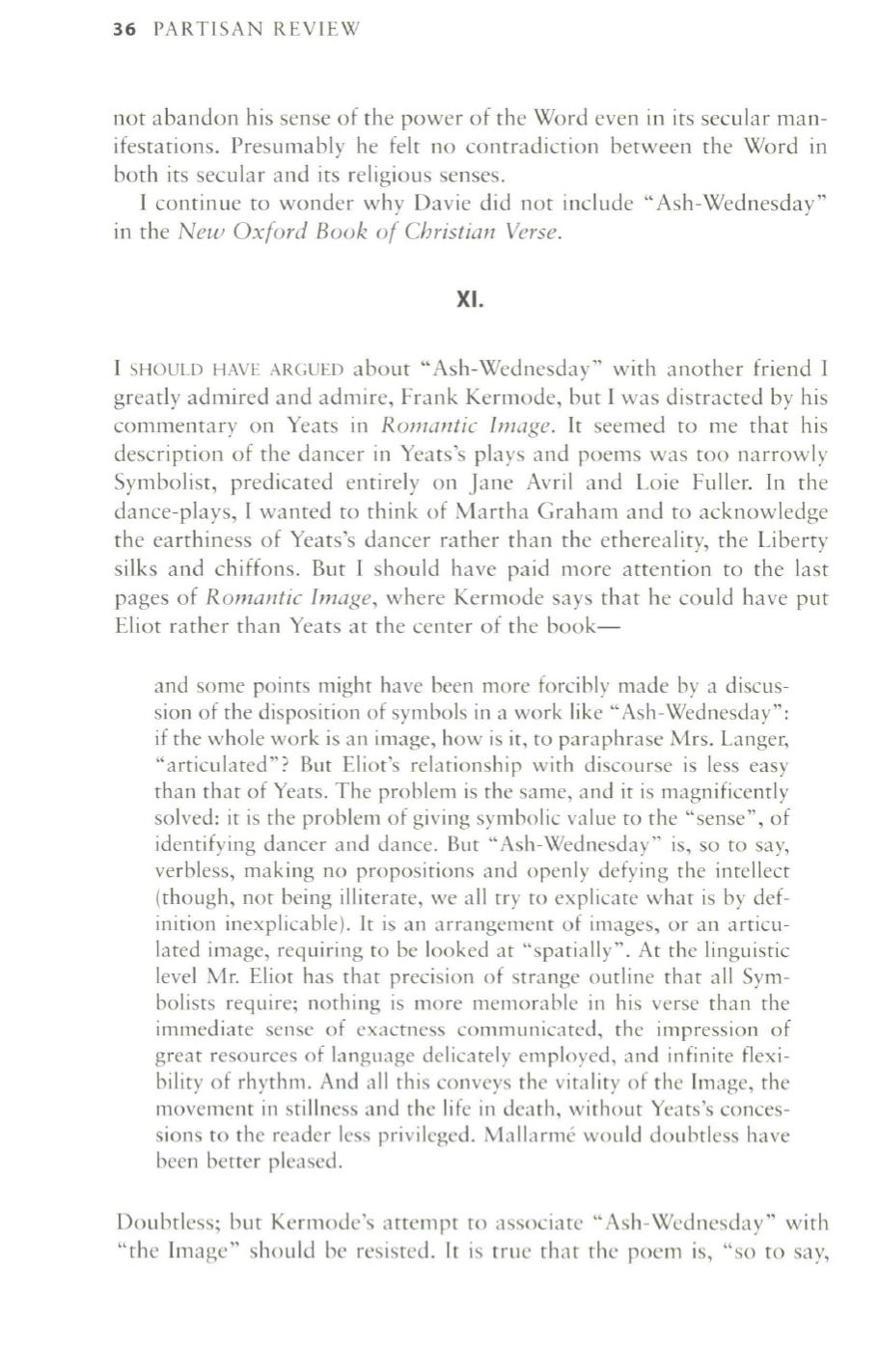
36
PARTISAN REVIEW
not abandon his sense of the power of the Word even in its secular man–
ifestations. Presumably he felt no contradiction between the Word in
both its secular and its religious senses.
I continue
to
wonder why Davie did not include "Ash-Wednesday"
in the
New Oxford Book of Christian Verse.
XI.
I
SHOULD HAVE ARGUED
about "Ash-Wednesday" with another friend I
greatly admired and admire, Frank Kermode, but I was distracted by his
commentary on Yeats in
Romantic Image.
It seemed
to
me that his
description of the dancer in Yeats's plays and poems was too narrowly
Symbolist, predicated entirely on Jane Avril and Loie Fuller. In the
dance-plays, I wanted to think of Martha Graham and
to
acknowledge
the earthiness of Yeats's dancer rather than the ethereality, the Liberty
silks and chiffons. But I should have paid more attention
to
the last
pages of
Romantic Image,
where Kermode says that he could have put
Eliot rather than Yeats at the center of the book-
and some points might have been more forcibly made by a discus–
sion of the disposition of symbols in a work like "Ash-Wednesday":
if the whole work is an image, how is it,
to
paraphrase Mrs. Langer,
"articulated"? But Eliot's relationship with discourse is less easy
than that of Yeats. The problem is the same, and it is magnificently
solved: it is the problem of giving symbolic value
to
the "sense", of
identifying dancer and dance. But "Ash-Wednesday" is, so to say,
verbless, making no propositions and openly defying the intellect
(though, not being illiterate, we all try
to
explicate what is by def–
inition inexplicable). It is an arrangement of images, or an articu–
lated image, requiring to be looked at "spatially". At the linguistic
level Mr. Eliot has that precision of strange outline that all Sym–
bolists require; nothing is more memorable in his verse than the
immediate sense of exactness communicated, the impression of
great resources of language delicately employed, and infinite flexi–
bility of rhythm. And all this conveys the vitality of the Image, the
movement in stillness and the life in death, without Yeats's conces–
sions to the reader less privileged. Mallarme would doubtless have
been better pleased.
Doubtless; but Kermode's attempt to associate " Ash-Wednesday" with
"the Image" should be resisted. It is true that the poem is, "so
to
say,


